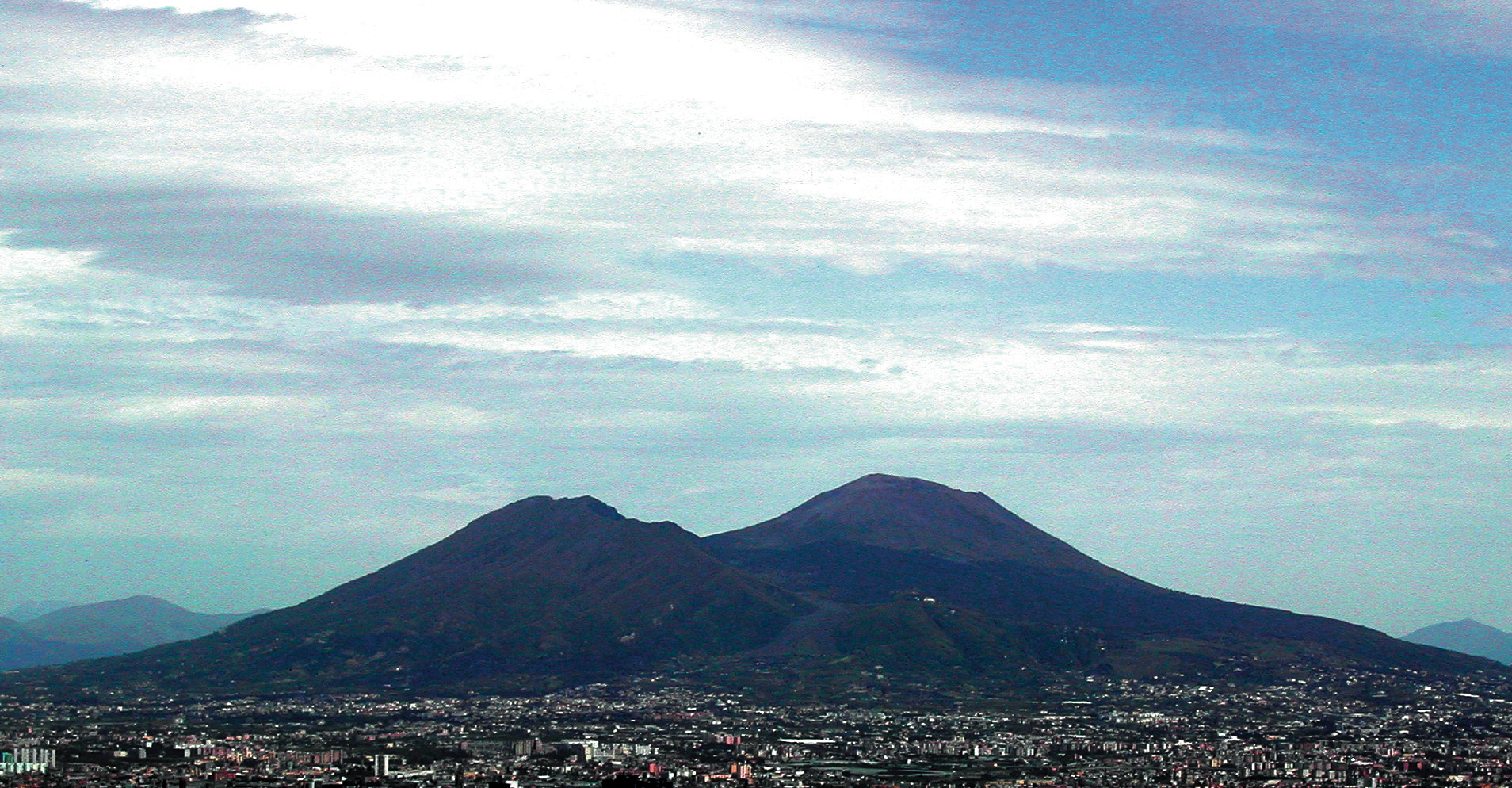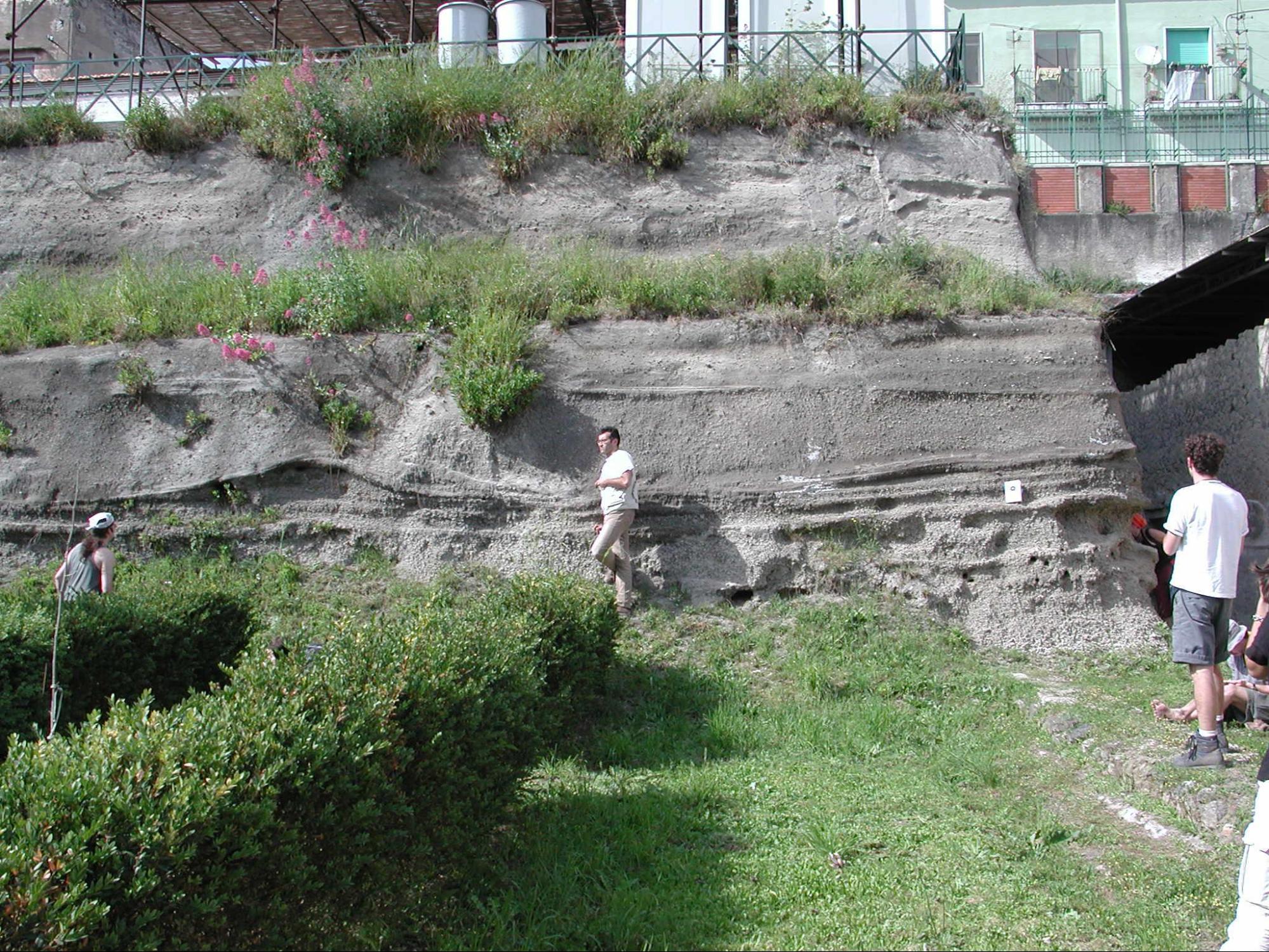 The volcanic edifice of Somma – Vesuvius, where the first is the oldest volcano whose caldera edge is visible on the left, while the second most recent is the cone grown inside the caldera.
The volcanic edifice of Somma – Vesuvius, where the first is the oldest volcano whose caldera edge is visible on the left, while the second most recent is the cone grown inside the caldera.
 Part of the pyroclastic succession of the 79 AD eruption outcropping around the archaeological site of Oplontis (Torre Annunziata, NA), with INGV-OV researchers and students studying its stratigraphy and depositional structures
Part of the pyroclastic succession of the 79 AD eruption outcropping around the archaeological site of Oplontis (Torre Annunziata, NA), with INGV-OV researchers and students studying its stratigraphy and depositional structures
 The inner wall of the Mount Somma caldera, seen from the northern slope of Vesuvius
The inner wall of the Mount Somma caldera, seen from the northern slope of Vesuvius
Location and maximum height: Campania, 40°49′18.01″N, 14°25'33.57” E; Vesuvius = 1281 m asl
Total area: ≈115-150 km2 (considering the part of the building that emerges from the sediments of the surrounding plain)
Volcano type: stratovolcano
Main types of eruptions: effusive, strombolian, plinian
Prevailing phenomena: hydrothermal emissions, seismicity, landslides
Beginning of eruptive activity: <39.000 years
Last eruption: 1944
Activity state: quiescent
Alert level: Basic
The volcanic complex of Somma-Vesuvius is located in the south-eastern part of the Piana Campana where it stands out at a height of 1281 m asl. It is made up of an older building, the Somma, characterized by a summit caldera formed in different phases, and a more recent one: the cone of Vesuvius, grown inside the caldera.
The volcanic complex has an eruptive history whose beginning is more recent than 39.000 years and was dominated for a long time by the emission of lava flows and by low energy explosions, until around 20.000 years ago. Subsequently, the eruptive style has been much more variable. In fact, since then, the volcano has generated 4 high-energy eruptions - called Plinian eruptions and preceded by rather long periods of quiescence - and about 10 explosive events of lower energy (sub-Plinian and violent Strombolian eruptions). The last Plinian event is represented by the famous eruption of 79 AD, which once again modified the Somma caldera, within which the recent cone then formed. In historical times, the events of greatest energy were the subplinian eruptions of Pollena (472 AD) and of 1631.
Vesuvius was characterized by phases of activity with an open conduit and phases with an obstructed conduit. The former were dominated by frequent eruptions, with alternating periods of persistent Strombolian activity (of low energy) and effusive activity. This type of activity has long characterized the volcano in the last historical period, between 1631 and 1944, the date of its last eruption. The phases with blocked conduits, such as the current one, are characterized by the total absence of eruptive activity. These periods, which in the history of Vesuvius had a very variable duration (from a few hundred to thousands of years), correspond to periods of re-feeding of the magmatic system and ended with Plinian or sub-Plinian explosive eruptions.
The eruption of 18 March 1944 lasted about 10 days, generated lava flows which partially destroyed the towns of Massa di Somma and San Sebastiano al Vesuvio, and explosions which generated deposits of ash and lapilli, distributed to the east and south of the volcano. Since the end of the 44 eruption, Vesuvius has been in a state of quiescence characterized by very moderate seismic activity and low-temperature degassing in the crater area.
link:



